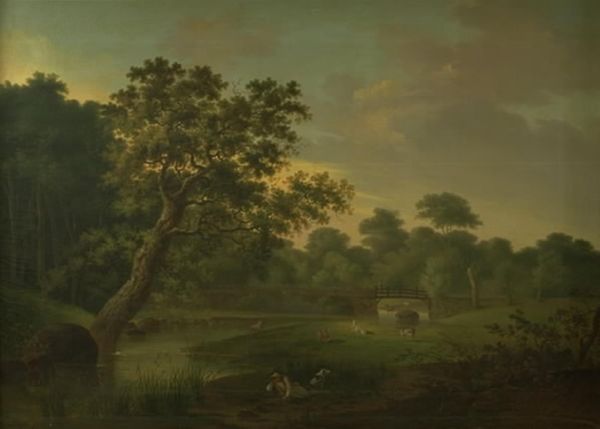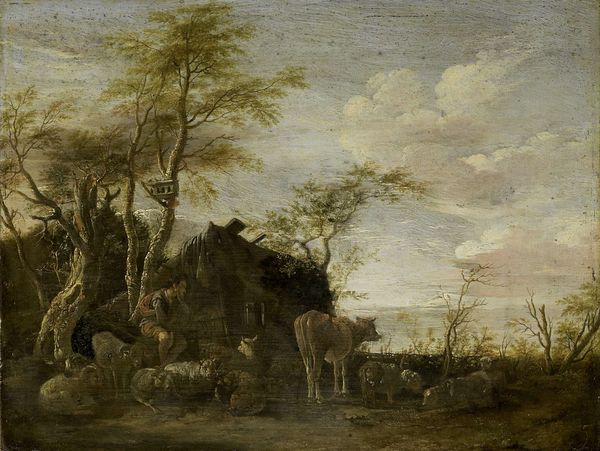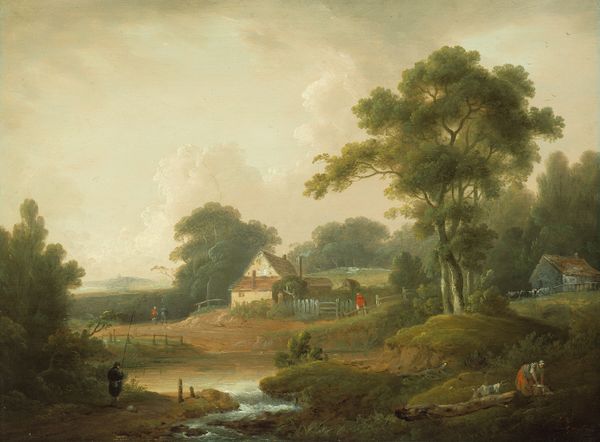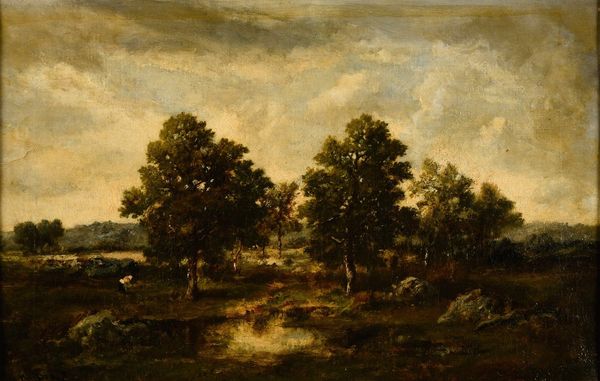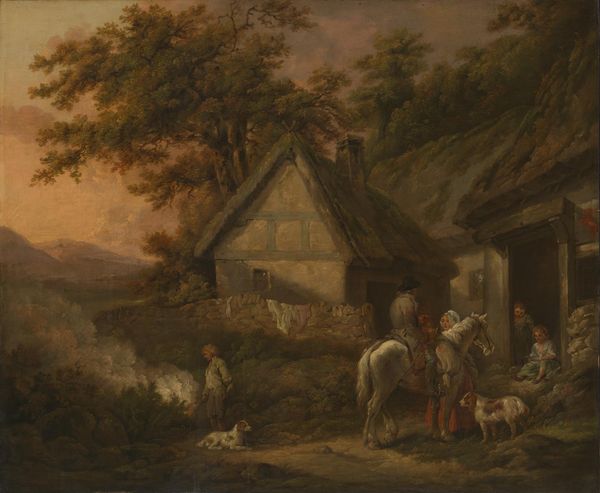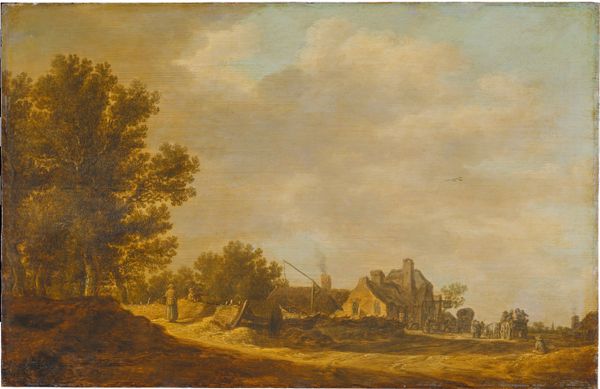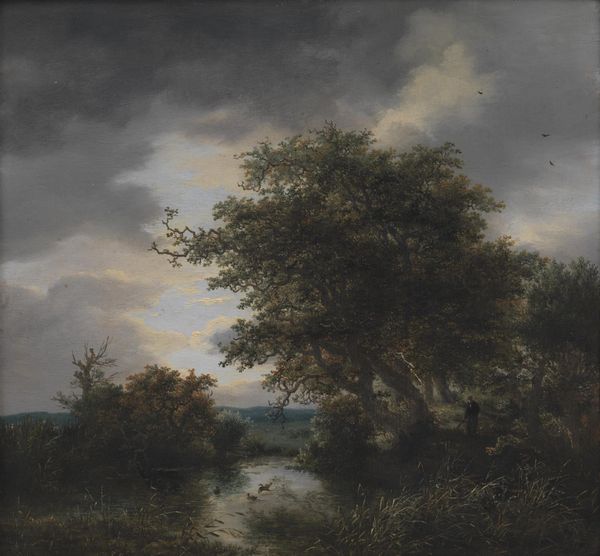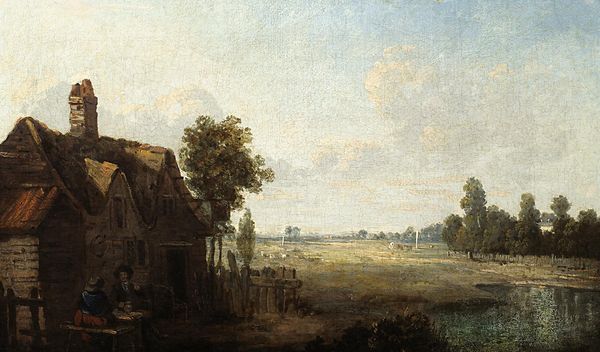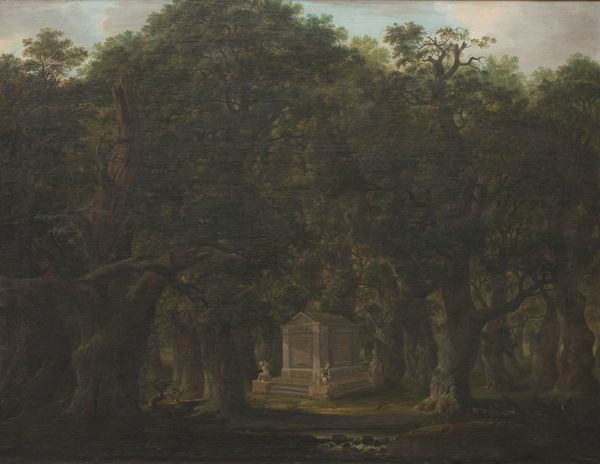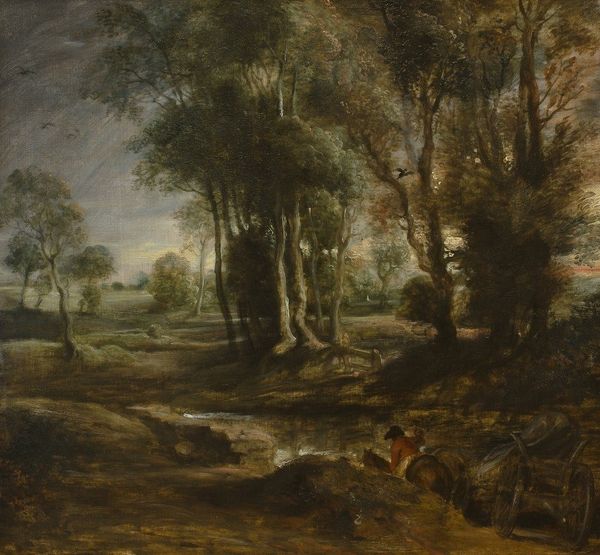
plein-air, watercolor
#
plein-air
#
landscape
#
nature
#
watercolor
#
romanticism
#
watercolor
Dimensions: 47 cm (height) x 60.5 cm (width) (Netto)
Editor: Here we have Elias Meyer's "Kirsten Pils Kilde i Dyrehaven," created between 1798 and 1809. It's a watercolor landscape, currently residing at the SMK. The overwhelming green and brown tones create a dense, almost claustrophobic atmosphere despite the outdoor setting. How do you approach interpreting this work? Curator: The interplay of light and shadow is paramount here. Notice how Meyer structures the composition around a stark contrast. The foreground plunges into deep, almost impenetrable shadow, pushing the figures into silhouette. The strategic use of light in the mid-ground then draws the eye, not just to the figures, but also the formal construction of the staircase and architectural elements. The very materiality of the watercolor contributes: its translucence allowing layers to build upon each other, mimicking the layering within the forest itself. Editor: So, you see the contrast not just as representing light and dark, but also guiding our reading of the scene? Curator: Precisely. Meyer directs our gaze and dictates the visual rhythm. What might appear at first glance as a straightforward depiction of nature, in fact, reveals itself as a carefully constructed sequence of visual information. Look how the eye moves vertically up the slope thanks to the stair’s geometric regularity, encountering human activity as intervals. Editor: That's fascinating. I was so focused on the initial darkness; I missed the intentional structuring. I thought this romanticism painting wanted to illustrate a specific scene and nothing more. Curator: The surface depiction is far less crucial than how it operates formally as an aesthetic object. How its elements arrange and interact generate meaning itself, that extends the reading past a direct referential value to nature itself. Editor: Thank you; I'll certainly look more carefully at how a composition guides the eye from now on.
Comments
No comments
Be the first to comment and join the conversation on the ultimate creative platform.
